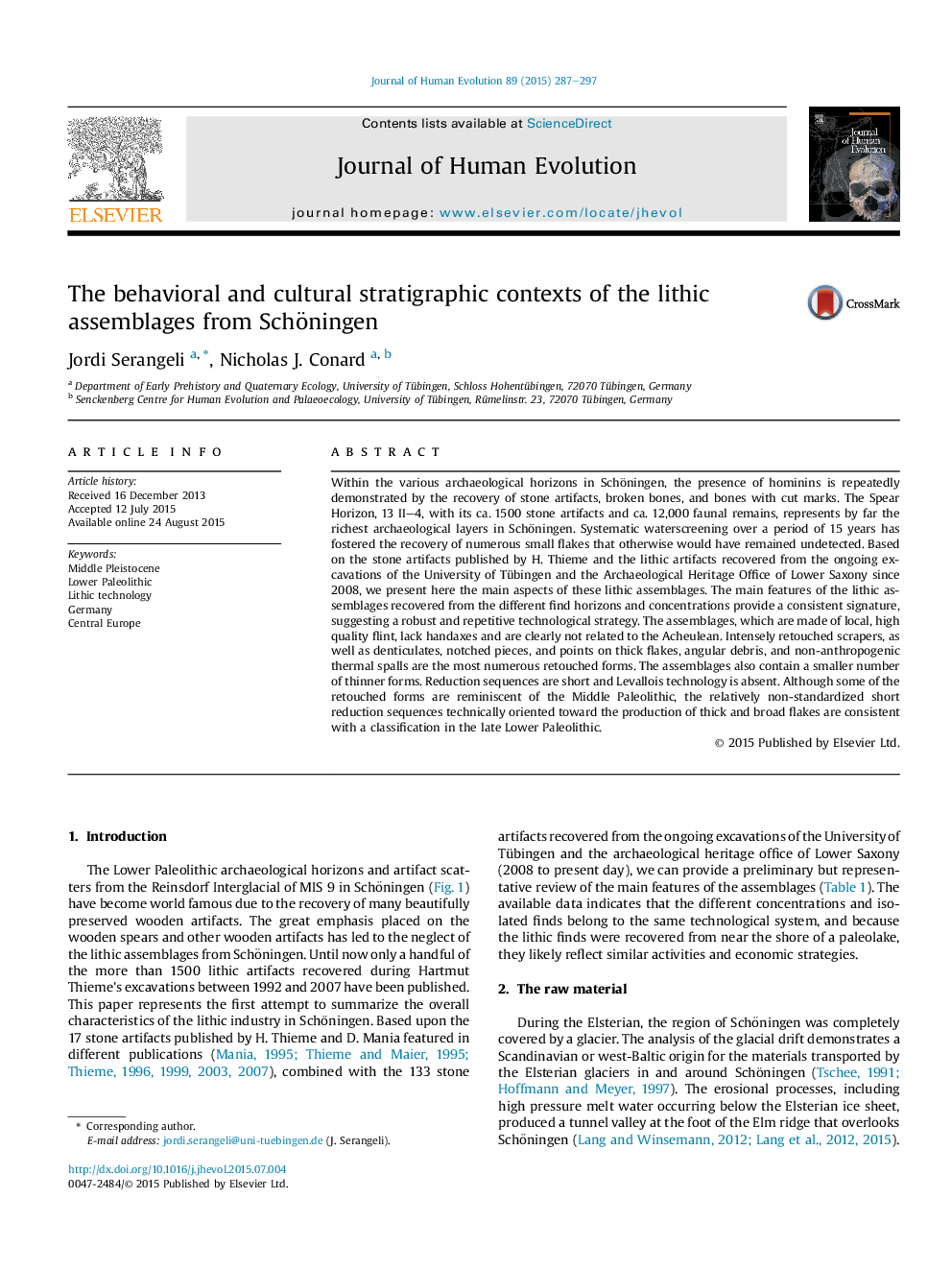| Article ID | Journal | Published Year | Pages | File Type |
|---|---|---|---|---|
| 4555917 | Journal of Human Evolution | 2015 | 11 Pages |
Within the various archaeological horizons in Schöningen, the presence of hominins is repeatedly demonstrated by the recovery of stone artifacts, broken bones, and bones with cut marks. The Spear Horizon, 13 II–4, with its ca. 1500 stone artifacts and ca. 12,000 faunal remains, represents by far the richest archaeological layers in Schöningen. Systematic waterscreening over a period of 15 years has fostered the recovery of numerous small flakes that otherwise would have remained undetected. Based on the stone artifacts published by H. Thieme and the lithic artifacts recovered from the ongoing excavations of the University of Tübingen and the Archaeological Heritage Office of Lower Saxony since 2008, we present here the main aspects of these lithic assemblages. The main features of the lithic assemblages recovered from the different find horizons and concentrations provide a consistent signature, suggesting a robust and repetitive technological strategy. The assemblages, which are made of local, high quality flint, lack handaxes and are clearly not related to the Acheulean. Intensely retouched scrapers, as well as denticulates, notched pieces, and points on thick flakes, angular debris, and non-anthropogenic thermal spalls are the most numerous retouched forms. The assemblages also contain a smaller number of thinner forms. Reduction sequences are short and Levallois technology is absent. Although some of the retouched forms are reminiscent of the Middle Paleolithic, the relatively non-standardized short reduction sequences technically oriented toward the production of thick and broad flakes are consistent with a classification in the late Lower Paleolithic.
